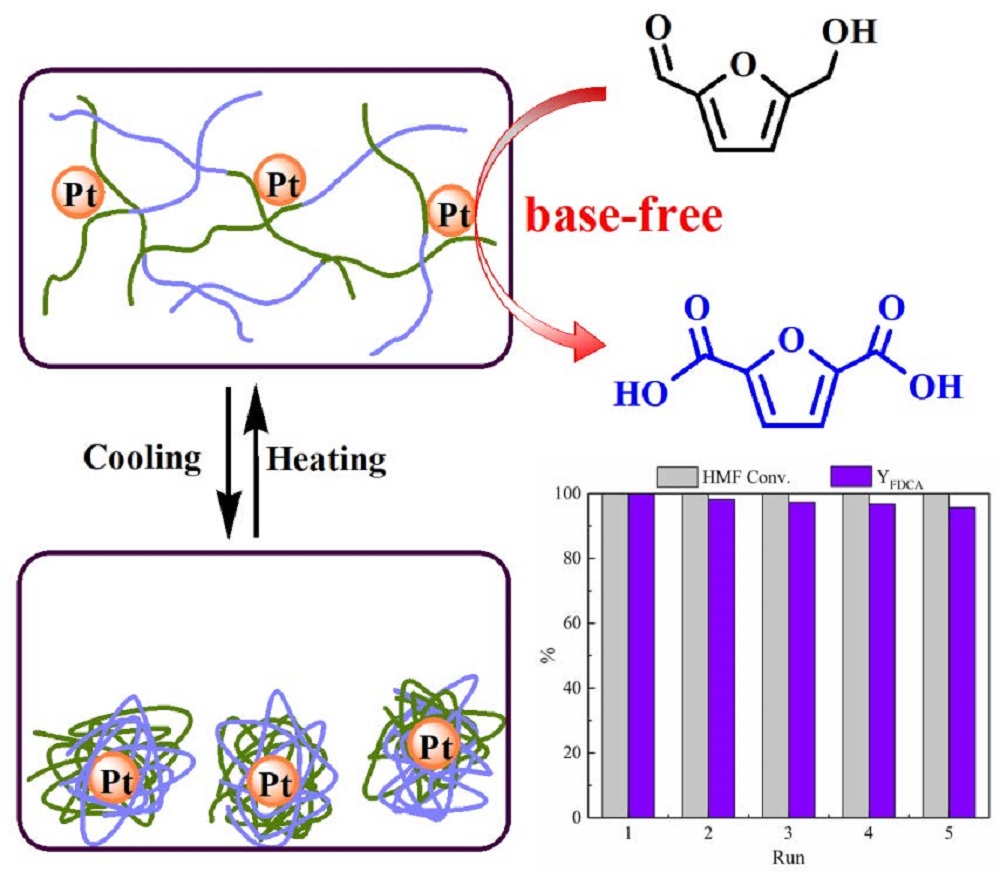Biomass has been considered to be the most attractive sustainable sources for fuels and bulk chemical feedstocks [
1–
5]. 5-Hydroxymethyl-2-furfural (HMF), one of the major biomass platform chemicals, can be obtained from acid-catalyzed dehydration of cellulose and its derived C6 carbohydrates can be converted into a variety of biofuels, fine chemicals and pharmaceuticals [
6–
8]. Recently, the oxidation of HMF has attracted increasing attention since its final product, 2,5-furandicarboxylic acid (FDCA), has been listed as one of the top 12 building-block chemicals by the US Department of Energy and is regarded as a promising alternative to petroleum-derived terephthalic acid for the manufacture of key polyesters and polyamides [
9–
12]. A wide variety of metal catalysts, especially noble metal nanocatalysts, such as Au [
13,
14], Pt [
15–
17], Pd [
18–
20], Ru [
21] and Au-Pd alloy [
22,
23], supported on different carriers, including metal oxides [
13,
16–
18], carbon materials [
21,
22], zeolite [
14], hydroxyapatite [
20] and zinc hydroxycarbonate [
23], have been developed for the catalytic aerobic oxidation of HMF toward FDCA in water with satisfactory catalytic efficiency by using molecular oxygen or air as the green oxidant. In most cases, however, a large excess of homogeneous base, such as NaOH or Na
2CO
3, was required, greatly limiting their practical applications due to the potential equipment corrosion and environmental pollution, as well as the need of neutralization reaction to isolate the acid products.












